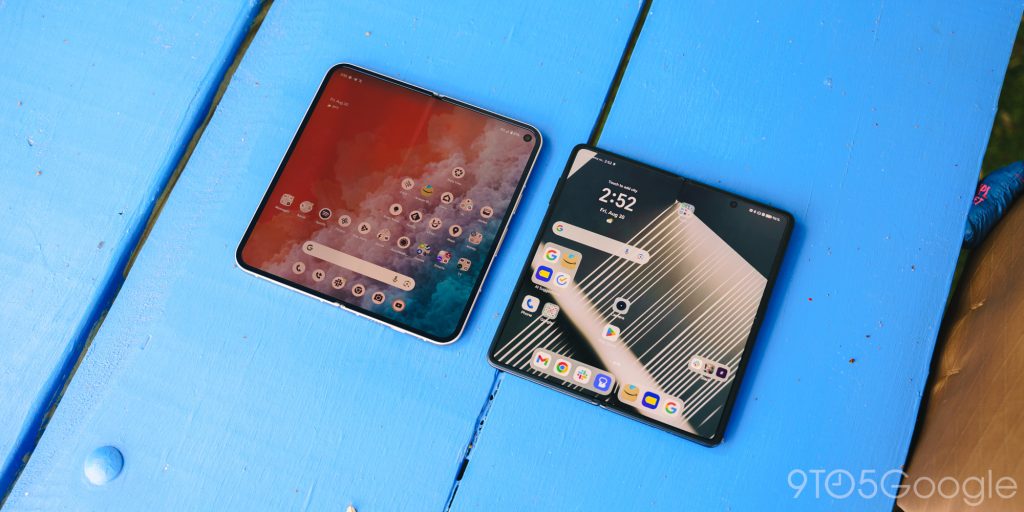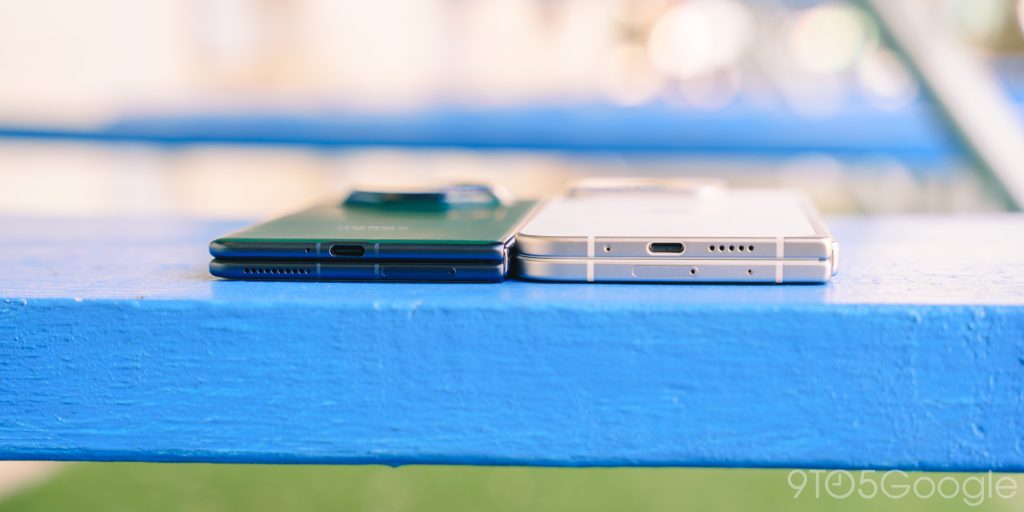
Honor just announced the Magic V3, setting a new record for the thinnest foldable on the market. We’ve had some time to test the Magic V3 out, so here’s how it compares to Google’s newest foldable, the Pixel 9 Pro Fold.
One of the most advanced foldables, physically
The Magic V3 is not only a spectacular device in terms of build; it’s packed to the teeth with some of the newest components available. For an SoC, Honor went with the Snapdragon 8 Gen. That CPU and GPU system are paired with 12GB of RAM, which comes in handy for multitasking – something every foldable needs to prioritize.
Honor also equipped the Magic V3 with a 5,150mAh battery. I’ve been more than thrilled with the battery life I can get out of each day. On standby, the phone barely uses any power, even with the wallpaper displayed in AOD mode.

One of the major drawbacks of this device, however, is the OS that it runs. The foldable carries MagicOS 8.0.1, which is the company’s latest skin on top of Android. However, there are a lot of nuances I just don’t find particularly inviting compared to something like the Pixel 9 Pro Fold, which runs Google’s version of Android 14.
For instance, the control panel drives me insane. Where other foldables will showcase both the control panel and notifications entered on the same screen when the device is open, the Magic V3 will only show one or the other. To get the notifications, you need to either swipe from the correct spot on the top of the screen or swipe across where the panel acts as a second page. There are other little design choices made that don’t seem to mesh well, though it’s something someone could get used to.

Another small gripe I had was with the haptic motor. I would not be shocked if there was a hidden setting that has the haptics set to “super low.” Actions like typing my PIN in to unlock the phone offer next to no feedback, and it’s incredibly unnerving.
That being said, the phone runs incredibly fast at 120Hz on both displays. Each panel is gorgeous and easy to look at, and Honor has even patented some eye-saving tech to alleviate screen fatigue. Not only that, but the phone takes on a lot of proprietary AI features like Face to Face Translation and AI-driven notes transcription.
All of that is packed within a body that comes in at just 9.2mm thick. For reference, the Galaxy Z Fold 6 is 12.1mm in height. With that profile, the phone feels massive and visually, there is a ton of real estate, but the phone is actually pocketable and not much bigger than a slab device. The fact that it’s this thin and able to operate at the level it does is honestly astounding.

The inner crease also plays a big role in easing the pain points of the foldable niche since it’s genuinely minimal.
Holding the phone while it’s unfolded actually feels weird. It’s essentially like holding a field notes journal. Remember, it sits only 4.35mm off its supporting surface when unfolded. Of course, the camera bump does well enough to almost double that. Still, it’s impressive.
Magic V3 versus the Pixel 9 Pro Fold
In truth, if you were to hold the Honor Magic V3 and Google Pixel 9 Pro Fold separately on different days, you’d essentially forget the differences. As incredible as a 9.2mm thick device is, the current state of foldables in 2024 offers options that are more than comparable.
The Pixel 9 Pro Fold comes in at 10.5mm thick. That added 1.3mm doesn’t do a whole lot to make me, personally, prefer one device over the other. In fact, both are built really well. The Magic V3 obviously feels much more sleek, but as you might know from the Pixel 9 review I wrote, I truly love the boxy and modern feel of the devices both Google and Samsung have recently released.



In the hands, the Pixel 9 Pro Fold feels fantastic. Those boxy edges look and feel great to hold, and in reality, Google’s latest foldable is remarkably thin – at least for being the company’s second attempt.
The Magic V3 is slightly large in terms of display, with a 6.43-inch panel on the outside. The Pixel 9 Pro Fold utilizes a 6.3-inch screen. That being said, the internal displays are slightly different as well, with the Pixel 9 Pro Fold being slightly more boxy in its aspect ratio. The difference in reality is negligible.
Both devices feel excellent to hold, but if it came down to software experience, I’d choose the Pixel 9 Pro Fold. The Magic V3 has all the right physical attributes of a sturdy foldable that’s incredibly comfortable to use, but it doesn’t offer the smoothest experience.
The Magic V3 launches globally today for €1,999.
FTC: We use income earning auto affiliate links. More.





Comments